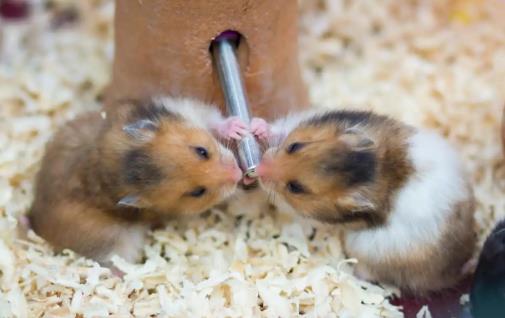The care of Syrian hamsters (Golden Hamsters) mainly includes the following aspects:
Breeding Environment
Cage: It is recommended to use a cage with a length of 60 cm or more to ensure that the hamster has enough space to move around. The bottom of the cage should be solid to avoid the hamster's feet getting caught.

Running Wheel: The diameter of the running wheel should be between 24 and 32 cm. A wheel that is too small may cause damage to the hamster's spine.
Bedding: In summer, wood chips, wood pellets, shavings, and timothy hay can be used. In winter, paper cotton and degreased cotton balls are suitable. The bedding should be replaced every 15 to 30 days.
Hiding Place: Provide a ceramic nest, wooden nest, or stone nest with a length of more than 14 cm to give the hamster a safe place to hide.
Diet Management
Main Food: It is recommended to use branded hamster food, such as Kakoo Sugar-Free, Bunny, Harry, Vitakraft, etc. You can also choose self-prepared food with a scientific ratio.
Supplementary Food and Snacks: Appropriate amounts of fresh vegetables (such as carrots and broccoli), fruits (such as apples and blueberries), and protein-rich foods (such as mealworms and boiled egg whites) can be given. Be careful not to overfeed, as it may lead to soft stools or diarrhea.
Drinking Water: Use a 60-125 ml vacuum or steel ball water bottle and provide cooled boiled water or mineral water. Check the water flow of the water bottle every day.
Health Care
Daily Observation: Regularly observe the hamster's physical condition, including whether the fur, eyes, and feces are normal. Once any abnormalities are found, such as loss of appetite or sluggish movement, take timely measures or seek the help of a veterinarian.
Tooth Grinding: Provide tooth grinding toys or food to prevent the teeth from growing too long and affecting eating.
Cleaning: Regularly clean the cage and replace the bedding to keep the environment clean and hygienic. Avoid using bath sand or water for bathing, as hamsters will clean themselves by licking their fur.
Behavior Training and Interaction
Interaction: Hamsters are nocturnal animals. Do not disturb them during the day while they are resting. You can gently stroke them at night to enhance the bond.
Training: Through positive reinforcement training, such as rewarding with snacks, you can teach the hamster some simple commands, which can enhance the trust and tacit understanding between you and the hamster.
